WIP Artist Highlight: Craftwork
Nadege Pierre, Artist Programs intern at TAC, got together with October WIP residents Nicole Yi Messier & Victoria Manganiello:
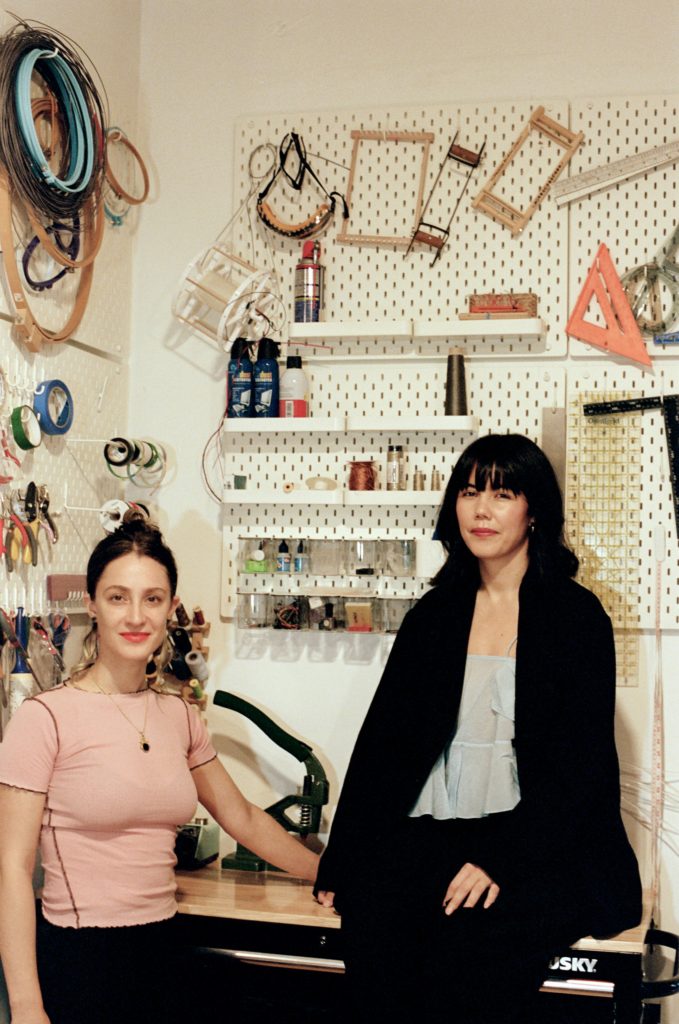
Tell me more about what you two are working on.
Victoria: At the moment, we have our toes in about 10 or 20 different projects, which is sort of normal for us. We are exploring, creating speakers - soft speakers using weaving, embroidery, crochet, and other textile techniques. We have been focusing recently on woven speakers. There is something about the woven structure that perhaps lends itself nicely for soft speakers.
Nicole: In the studio, we are collaborating with a glass artist named Kate Reed, exploring ways to incorporate glass into knitting on a domestic knitting machine. Creating a seamless textile by placing glass into pockets and tubes. And, we’ve been working on a documentary film called The Domestic Machine. It’s about domestic knitting machines and the online craft communities that have formed around it.
Victoria: We are in post-production phase, so we’re getting closer to the finish line. We don’t have an exact date for when it will be complete, but we’re working through it and excited to share it with the TAC community when it’s ready.
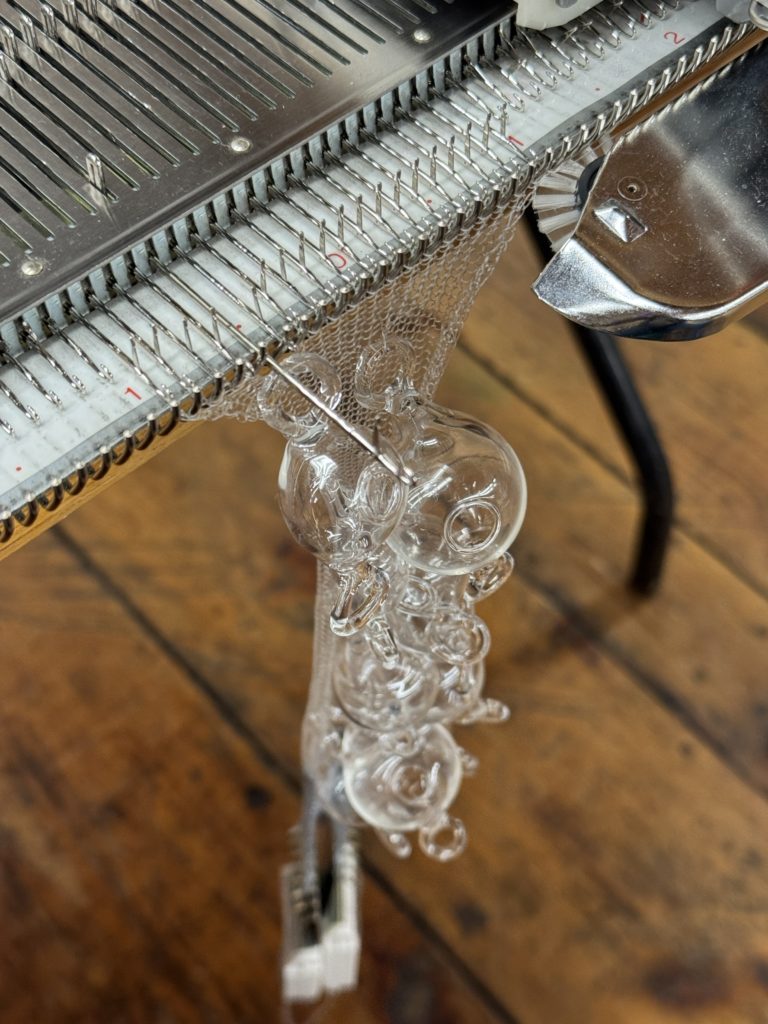
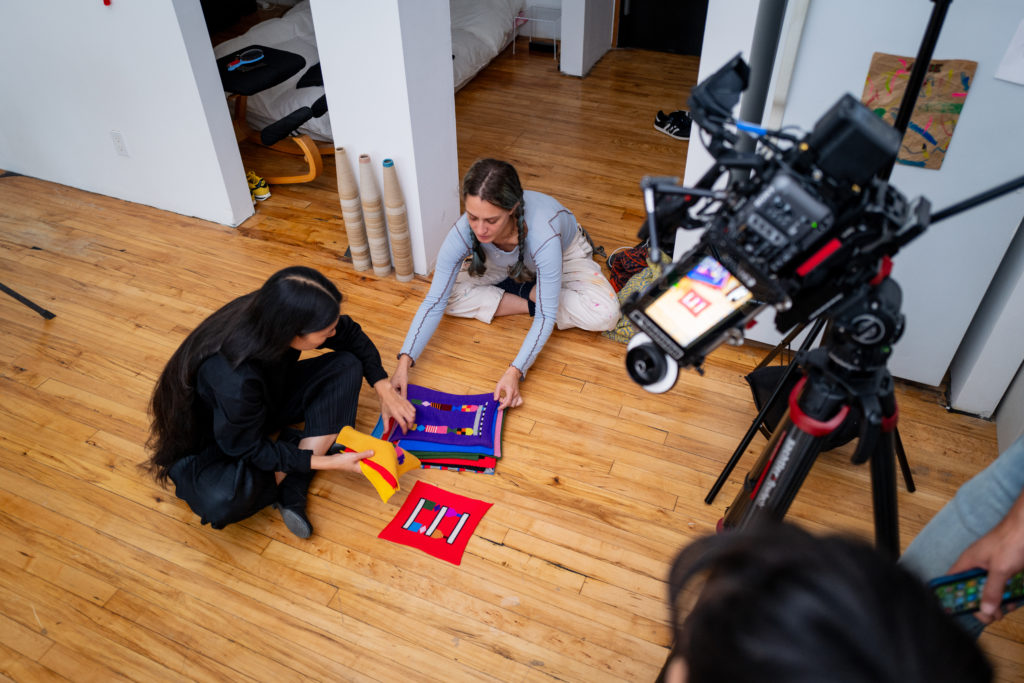
You two are driven by the playful inquiry to explore. What life experiences or inspirations do you draw from to incorporate playfulness into your work?
Victoria: Well, I think we could say play is part of our work. We really embrace the process. We are process-oriented artists, and our work asks the viewer to think about the process. Textiles and technology are pervasive throughout our lives. Perhaps, focusing on how the objects we use everyday are made can help us become a little more thoughtful about what we consume, where materials, textiles, and technology go after they leave our brains, hands, homes, etc. Showing work in progress, or sharing our swatches, diagrams, and information on how we create, is perhaps a playful attitude. We are playful with our work in the studio. We share the way our work is created, and hopefully, that can invite playfulness.
Nicole: We’re super interested and excited on exploring how machines work and spend a lot of time tinkering with them. You can find that in our work in a playful manner. For example, like speakers, how do they work? They’re quite simple. And how can we make them into objects that are accessible, fun, and exploratory?
We are looking forward to building fabric speakers at the Soft Speakers workshop on October 22nd.
Nicole & Victoria: It's a really fun workshop, and we've been able to do it with a diverse group of audiences over the years. It's really fun to make a soft speaker and is possible in a pretty short amount of time, considering. From thread and fabric, to something vibrating that the ear can hear as whatever sound we want to play. It's kind of magical. It creates access to something that can feel mysterious, empowering participants to make their own technology.
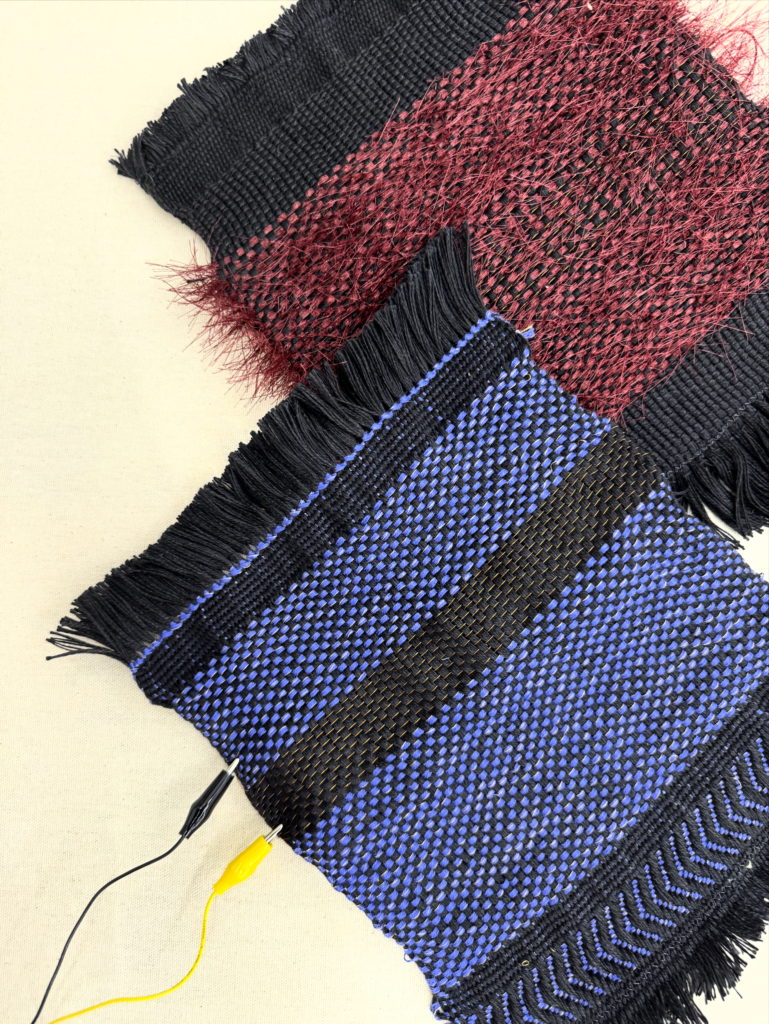
In the 2024 New York Times article, “Watching the Future Hatch in the New Museum Incubator,” mentioned that both of you would like for us as the audience to interact and speak with the textiles. What responses would be expected from your textiles? What would you like for us to decode and connect to?
Nicole: When we create our work, we hope that people can explore it in different ways. Similar to playing games, where there are different types of gamers. The project that was mentioned in the article was called Ancient Futures. It was an installation woven with fiber optics. You can walk up to the textile, prompting it to tell a message or a story. The installation will take that story, translate it from speech to text, then reflect the sentiment of the story back in light. There are many ways to explore and play with this. We had people sit and tell the textile many stories. Others were more voyeuristic and just watched it. Others were interested in the storytelling behind our pieces. Our work has many different vantage points in order where you can experience it in different ways.
Victoria: An iteration of that project was also exhibited at the National Communication Museum in Melbourne, Australia. Visitors have an opportunity to walk up, pick up a phone receiver and speak to the textile. A research center called CARA in the West Village, exhibited a piece of our work that wasn’t directly interactive. The colors and animations were influenced by people’s interactions. At the New Inc. New Museum exhibition another piece transmitted experience and story through the language of light.
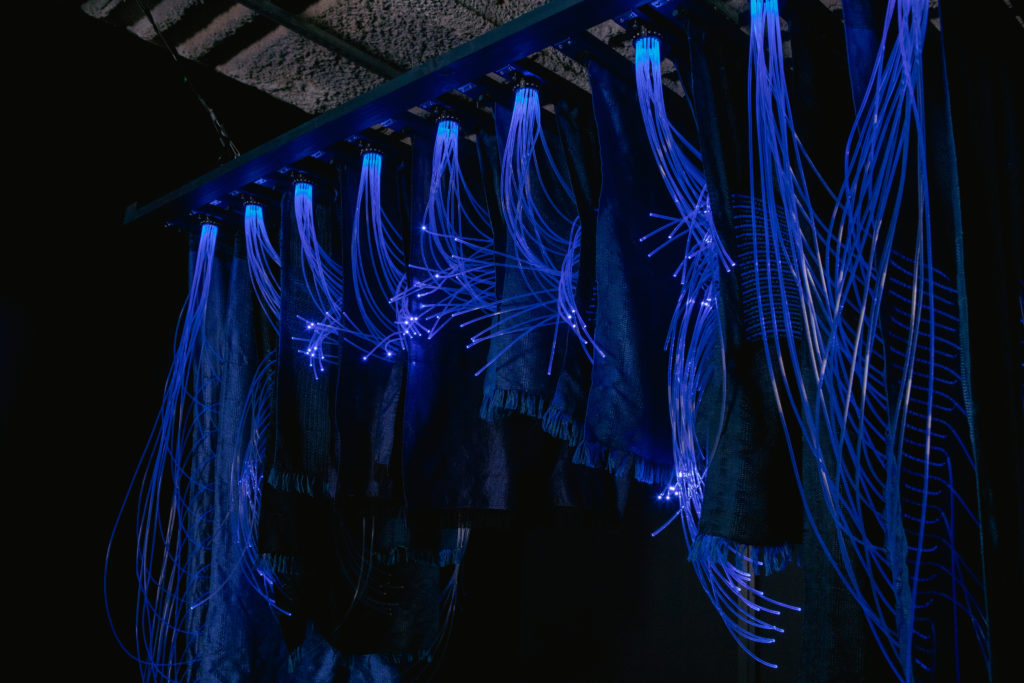
This new approach to technology and textiles. Do you both think we will embrace it or be afraid?
Victoria: I would not use the word afraid, but I do think people are cautious around things they don’t know. And this technology has been here for a minute; this is not the first time we’re seeing soft electronics. For some reason, the fashion industry has not taken this on in a major way, and our textile manufacturing has not changed all that much, either. Maybe we’re uncomfortable with changes, or maybe it’s that women’s work and soft materiality doesn’t feel as exciting as some architectural hard materials. Hopefully, people will embrace it in a way to make our lives a little softer, because the world is hard. I meant that metaphorically, our devices are glass and aluminum. Something we always say at Craftwork, what if instead of a plastic switch, you had a piece of velvet that you stroked to turn your lights on and off? How could that softness change the way we interact with technology? Hopefully for the better.
Nicole: Yes, and just to add to that, for Craftwork use the old with the new. We’re using ancient skills and technologies alongside modern day electronics. There’s a blend of the digital and physical that, I think, people will crave in the future.
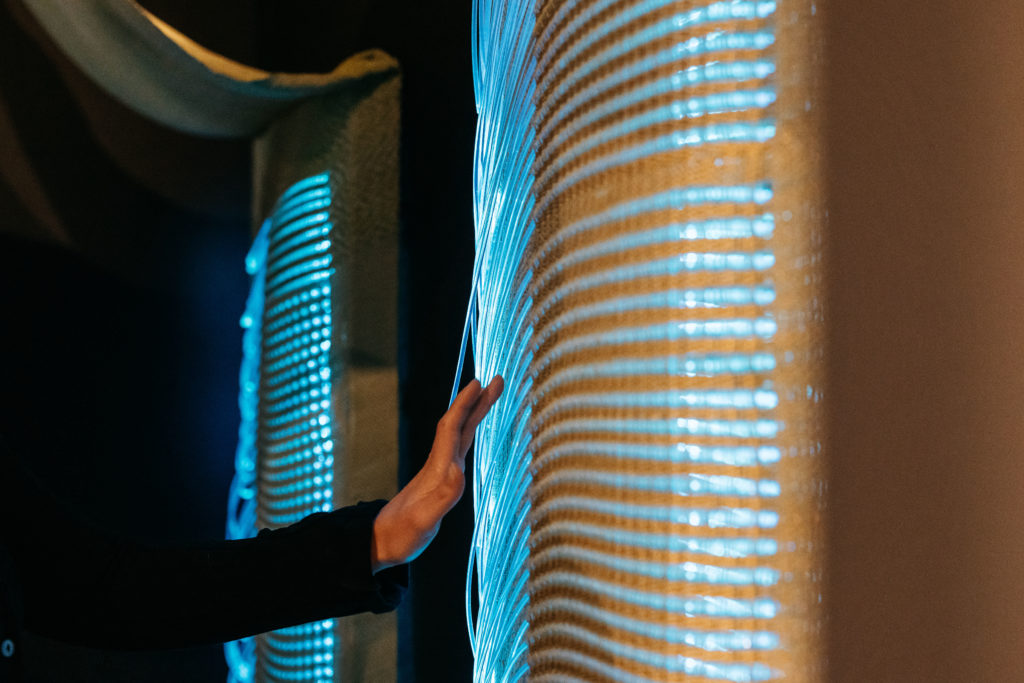
What would you two program into your textiles for the next generation? What would you two leave for us as a lasting legacy?
Victoria: Well, the first thing that comes to mind is ensuring that the ancient methods and materials used to create textiles live on. It does feel that aspects of these traditions are being lost and that’s why we were urgently motivated to produce our film The Domestic Machine. Knowledge is often held in the minds of craftspeople, but the way it has been documented is not holistic. So much knowledge has been lost with the generations, and knitting machines in particular, the domestic ones, are incredibly complex. There’s so much that can be done with them, but there’s not enough documentation of that knowledge. When we lose those craftspeople, how can we preserve this craft so that it continues to flourish? We would love to be stewards of this craft knowledge, technology knowledge. They are two examples of something similar.
Nicole: I agree with Victoria. It's talking about the people who built these things. In the film, we are trying to credit everyone who touched this piece of work and the labor behind it. Victoria: We want people to feel excited about textiles and technology.
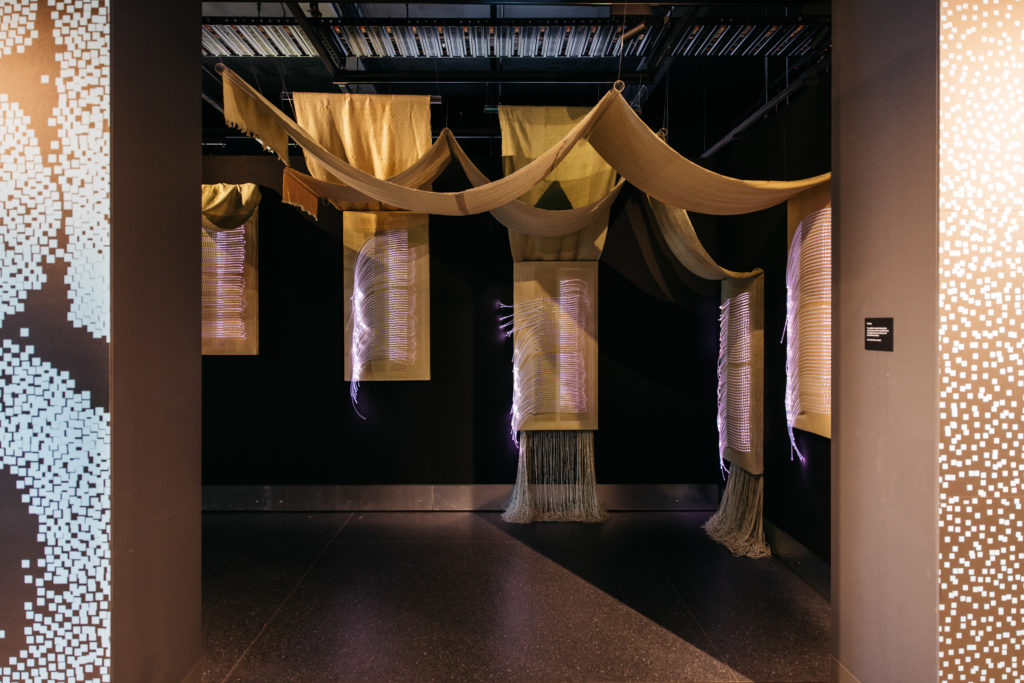
Craftwork is a multidisciplinary design and art studio that engages with the nature of textiles and technology through installations, storytelling, and material-based research. Founded by Victoria Manganiello and Nicole Yi Messier, their works operate at the intersection of materiality, technology, and experience, drawing inspiration from the history and future of soft materials. With over 20 years of combined experience, Victoria and Nicole founded Craftwork in 2022. Their background encompasses art, design, engineering, research, and technology. By combining their fascination with history with future-oriented materiality and their skills in traditional textile arts with new technologies, they create large-scale, dynamic projects with a variety of partners.